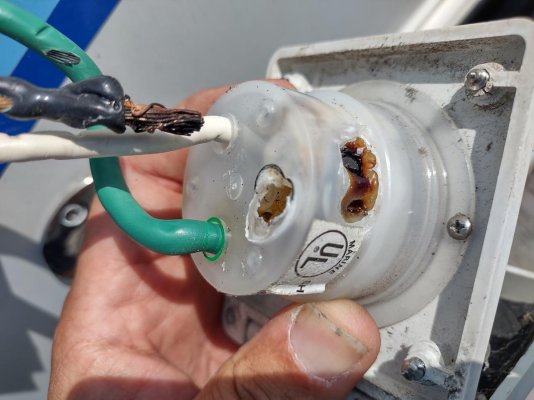"Smart Plug" not so smart?
I've replaced dozens of L5-30R connectors at the boat-end of shorepower cables for myself and for friends/clients. Before doing so I always remove and inspect the L5-30P inlet on the boat. In EVERY case, without exception, I have found the root cause is poor wiring termination inside the boat. The common defect is stranded wire stuffed into the inlet and the screw-clamp is directly in contact with the strands -- this is a 'code' violation -- ABYC requires a ferrule crimped on the end of any wire/cable that is terminated inside a screw-down type connector. When ferrules are not used, the strands 'squish', the connections invariably build up resistance over time, resistance creates heat in the blade(s), heat is conducted via the blade into the end of the shore-power cable and melts the plastic and/or causes a fire inside the boat. When an L5-30P inlet (or ANY boat-side AC inlet) s correctly wired using ABYC required ferrules, and recommended torque on the screws, the standard L5-30P is perfectly reliable and will provide safe service for the life of the boat. I am not a fan of 'Smart Plug' -- they are unnecessary, expensive and potentially mask other problems. After a recent heat-wave here in Minnesota I heard from four live-aboard marina mates that their cables were burned at the boat-end. All of them were burned because of miswiring inside the boat, the worst of them looked like this...a tragedy narrowly averted.

